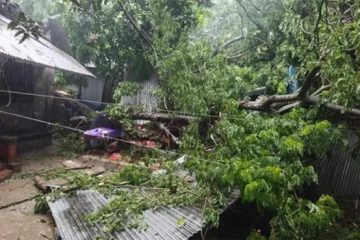Primary Education in Shambles-3
Govt faces big task to get total literacy
7 lakh new teachers, 30,000 schools needed
Suranjith Deabnath and Raihan Sabuktagin

The government faces a great challenge in realising its election pledge of total literacy in the country by 2014 because of the heavy dropout of children from primary schools and acute shortage of teachers.
Academicians and researchers think that to reach these targets, the government will have to recruit seven lakh new teachers — preferably trained — and build 30,000 new schools and 60,000 new classrooms in existing schools within the next two years.
Experts also suggest that the government allocates at least four per cent of the GDP towards primary education. At present, this remains at less than two percent.
About three million children in the country still don’t go to schools while 50 per cent of students who get admitted to class I drop out before completing five years of primary education, mainly due to poverty.
Achievement in primary education remains tremendously low, with the literacy rate being only 63 per cent. About 73 per cent of all teachers are untrained and there remain 19,043 villages which have no schools at all.
Educationists term the AL election pledges as unrealistic, but not impossible. They say the government will have to take pragmatic steps to achieve the targets.
“It is a tremendous challenge for the government because millions of children remain out of school. But it is possible. However, the government can achieve these goals if they remain dedicated to their pledges,” Kailash Satyarthi, president of Global Campaign for Education, told The Daily Star.
Primary and Mass Education Minister Nurul Islam Nahid has said that the government is going to take pragmatic approaches towards realising their goals.
“To reach our goal, we will first formulate a national education policy over the next few months based on the Qudrat-e-Khuda Education Commission-1974 report,” he said.
Meanwhile, Rasheda K Choudhury, an education adviser to the past caretaker government, said, “Primary education is yet to be spread to deprived pocket areas like Char land, Monga region and among disabled children, indigenous communities and the Dalit community. The time has come to emphasise on these deprived areas.”
According to a mid-term baseline survey report of Second Primary Education Development Project (PEDP-II), 73 per cent of teachers do not get any of the five types of trainings stipulated for government teachers.
The environment in primary schools remains in shambles as revealed by the survey report. Most of the classrooms are over crowded with more than double the number of students those can accommodate, or is permissible under government rules.
The ideal student-teacher ratio is 1:35 while in reality this stands as 1:55.
About 40 to 80 students share one classroom in schools in 282 upazilas. In 124 upazilas, 80 to 100 students share a room while more than a 100 students share one room in 55 upazilas of the country, the survey revealed.
The government is able to supply new textbooks to only 60 per cent of the primary schools. Besides, the School Tiffin Programme, with support from the World Food Programme (WFP), covers only one per cent of total primary school students in the country.
Experts say that the government will have to improve these situations if they are to make a headway towards their targets.
Courtesy: thedailystar.net




















